While not on the scale of some built by ancient kings, 6,000 temples dot the landscape, many being rebuilt with the cooperation of all communities
By Choodie Sivaram, Bengaluru
Hundreds of ancient temples in Kashmir reveal that the land is linked with historical legends from the eras of Ramayana and Mahabharata. Despite repeated invasions that left many temples in ruins, the traditional bonding of people with the land and its heritage has not diminished.
Temples like Shankaracharya Hill, Mattan Suriya Shrine and the magnificent Marthand Sun Temple are on the tourism map and frequented by visitors to Kashmir. Unknown to many are the numerous temples in every district of Kashmir that continue to be active. These are small simple structures without any pomp. Most have been rebuilt and maintained by contributions from devotees.
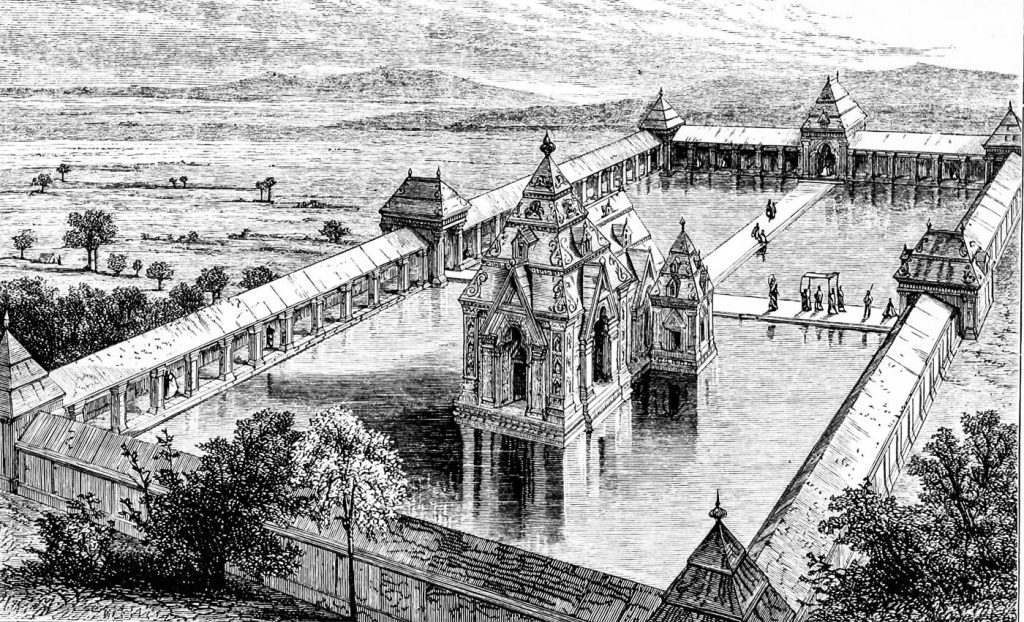

This is the seat of Kashmir Saivism, and Siva temples abound. Goddess Parvati, also, is worshiped in many of Her forms: as Shyama, Sharika Devi, Ksheer Bhawani, Roop Bhawani, Bhadrakali, Sharda, Chandi Mata and Maha Ragnya Bhagawati. The ancient text Bringesh Samhita contains descriptions of all the major shrines in Kashmir. In this article we will describe a few we visited in person and this will give a good idea of the rest. We start with Martand Sun Temple, one of the greatest of the ancient temples. It lies in ruins thirty-nine miles from Srinagar, in the Anant Nag district of Kashmir. Resting on a vast expanse of land, even in its desecrated form the temple reveals the ancient grandeur of Kashmir.


The solid walls 40 feet tall, the lofty central edifice, towering pillars of the surrounding colonnade, figurines of Gods and Goddesses, including those of rivers Ganga and Jamuna, on the walls of the sanctum sanctorum—every element evokes awe and, yes, sadness.
Walter Lawrence writes in his 1895 book The Valley of Kashmir, “Martand is a precious specimen of ancient art, deserving a foremost place among the remains of antiquity. It is to be preserved. If the state ever takes up the work of conservation of ancient monuments, Martand is the grandest of the ancient buildings.”
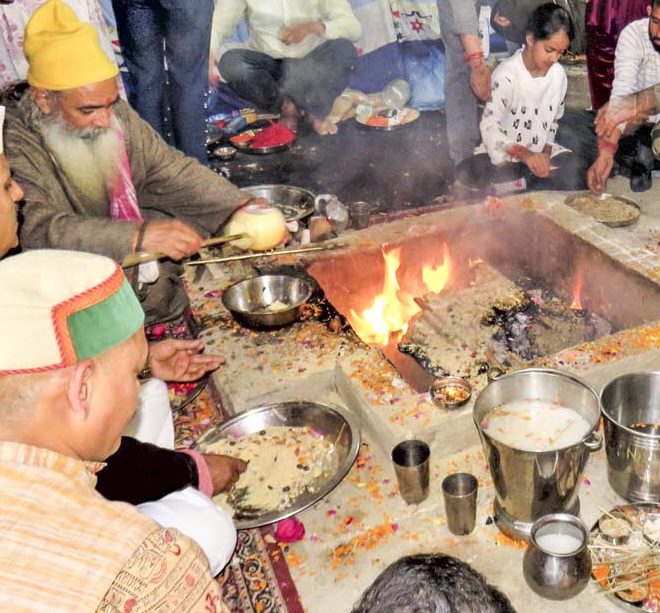

According to archaeological records, this is the first among the three major ancient Sun temples in India to be built by kings, the other two being Konark in Orissa and Modera in Gujarat. Martand was constructed by King Lalitaditya Muktapida (697-738 ce), one of several temples he commissioned on the lands under his control. It is believed that King Ramdev from Gujarat later expanded the temple, adding 184 murtis in a pillared hallway around the parikrama, or circumambulation path.
Our guide tells us, “The Martand temple complex also housed 84 smaller shrines. The roof of the sanctum sanctorum was constructed in such a way as to allow the Sun’s rays on the Deity throughout the day. Besides, there were four other temples in the complex. While the two in front were dedicated to worship, the two behind were reserved for resolution of problems and conflicts among people by the village council, or panchayat.”
As an example of the advanced technology of the period, the guide explained that the temple pond was fed from a mountain spring 22 miles away, and the water was purified by a filtration system. An 19th century drawing (above) of the intact temple shows the enormous pond created by the outer walls, with the temple standing island-like in the middle.
Muslim invader Sikander ruled Kashmir from 1389 to 1413. Near the beginning of his reign, he established a large camp just for the demolition of this temple. The solid structure resisted all efforts over a year’s time until finally it was destroyed with the help of fire to heat and crack the stones. The archaeology department has been working on the restoration of the temple, uncovering in the process innumerable stone slabs and murtis.
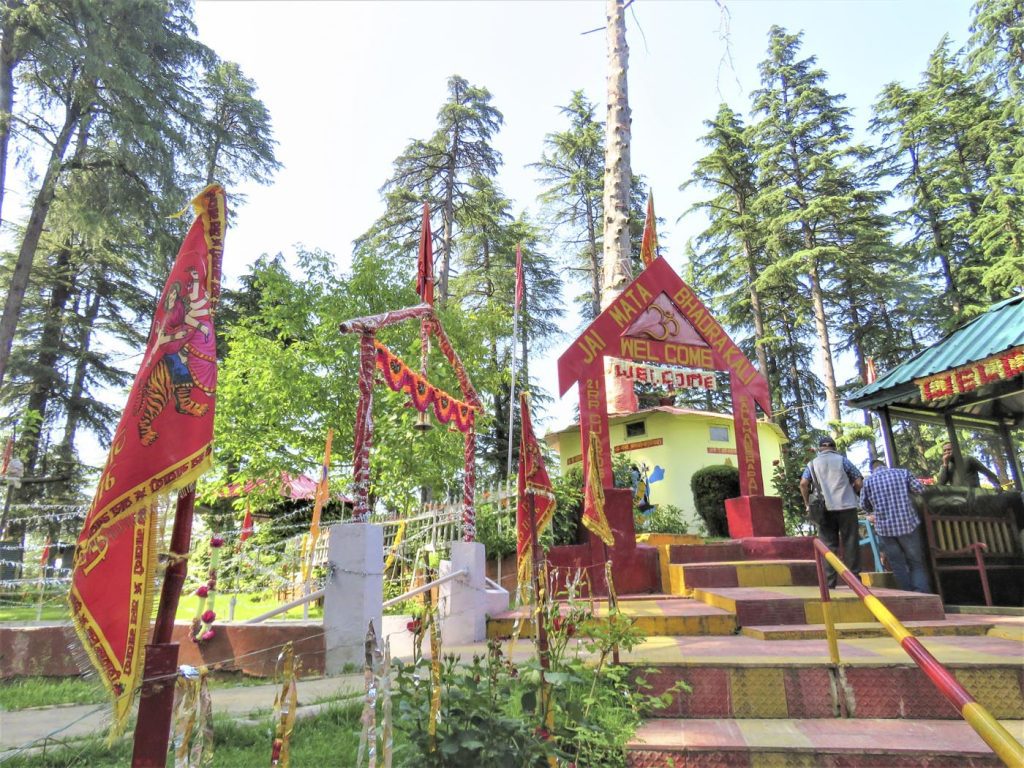

Functioning temples in Kashmir are different from those in the rest of India. Prior to the exodus in the 1990s, Hindus were a mere 2.45% of the population, definitely not enough to support a temple on the scale of Martand. There’s also the issue of topography, with hilly areas not suitable for large temples. Most temples I visited were wooden structures without any pomp. The Deities are often in the midst of a pond—a unique feature common to Kashmir’s temples, dating back at least to Martand.
Ksheer Bhawani Temple of Ragnya Devi at Tikker, located in Kupwara district of Kashmir, is one of the most important shrines for Kashmiri Pandits. Protected by the army, it was virtually unaffected by the unrest. Associated with the Ramayana period, this was Parvati’s first stop after leaving Sri Lanka. Nestled in the midst of the mountains, the temple complex has shrines to Goddess Sharda, statues of all the saints who stayed here and nine Chinar trees (Plantanus orientalis or Old World sycamore), believed to be the manifestation of nine forms of Durga.
The annual all-night festival signifying the birth of Goddess Ragnya Devi was celebrated on May 28, 2023. When I went to the temple that night, the pristine surroundings of the temple were filled with the fragrance of smoke emanating from the havan and devotees immersed in singing bhajans in Kashmiri. “This festival had stopped after the exodus, but we resumed it in 2011. Over the past few years the number of devotees has increased to thousands,” says Sunil Peschan, a native of Tikker. “This holy water is Ragnya Devi. The color of the water changes, prophesying the future. At times the flowers offered take forms of spiritual symbols.”
The temple abounds in stories of miracles.Devotees and security guards posted at the temple narrate incidents of sighting the Goddess in various forms. During the exodus, the temple was handed over to security forces and hence was protected from desecration. The temple has recently seen restoration and the construction of a dharmashala for devotees. “Earlier, people would stay with relatives here; now it has become crucial to provide accommodation for devotees from other cities,” says Peschin.


It was not just the Kashmiri Pandits and other Hindus, but many people, irrespective of religion, have faith in the Goddess and take part in the festivities. Firdous Ahmed, a Srinagar businessman, told me, “When I go to the temple, I don’t consume non-vegetarian or other non-sattvic foods. During the festival for two days, none of the houses in the vicinity of the temple cooks nonvegetarian food. We revere the Goddess.”
Bhadrakali Temple met the opposite fate, being completely destroyed. Traveling to this shrine at Handwara just a few years ago was extremely dangerous; the area was a hotbed of militancy. It is close to Pakistan-occupied Kashmir, where insurgency threats from across the border still keep the army on high alert. Driving through the mountains to reach this temple, we passed through thick forests of chinnar, or Himalayan cedar tree (Cedrus deodara). It was so beautiful, I wished we could keep driving.
Located on the top of a hill, the temple enshrines the powerful Deity Bhadrakali. In 1994 it was entirely burned down, but a partially burned Chinar tree survived. The temple was rebuilt by the army in 2004. According to legends, Goddess Bhadrakali settled here after slaying the demon Mahishasura and meditated under this chinar tree, which is now part of the inner sanctum and where the Goddess is believed to reside. Vishnu appeared to thank Her for slaying the demon and granted the boon that whoever visits the temple will have their prayers answered.
Soldiers from the Indian army narrate how the Goddess has manifested often, guiding them to safety and helping them succeed during military actions. With the soldiers patrolling the dense forest terrain on the mountains on foot, especially at night, with the enemy across the valley, one can sense that it’s the Goddess protecting them.
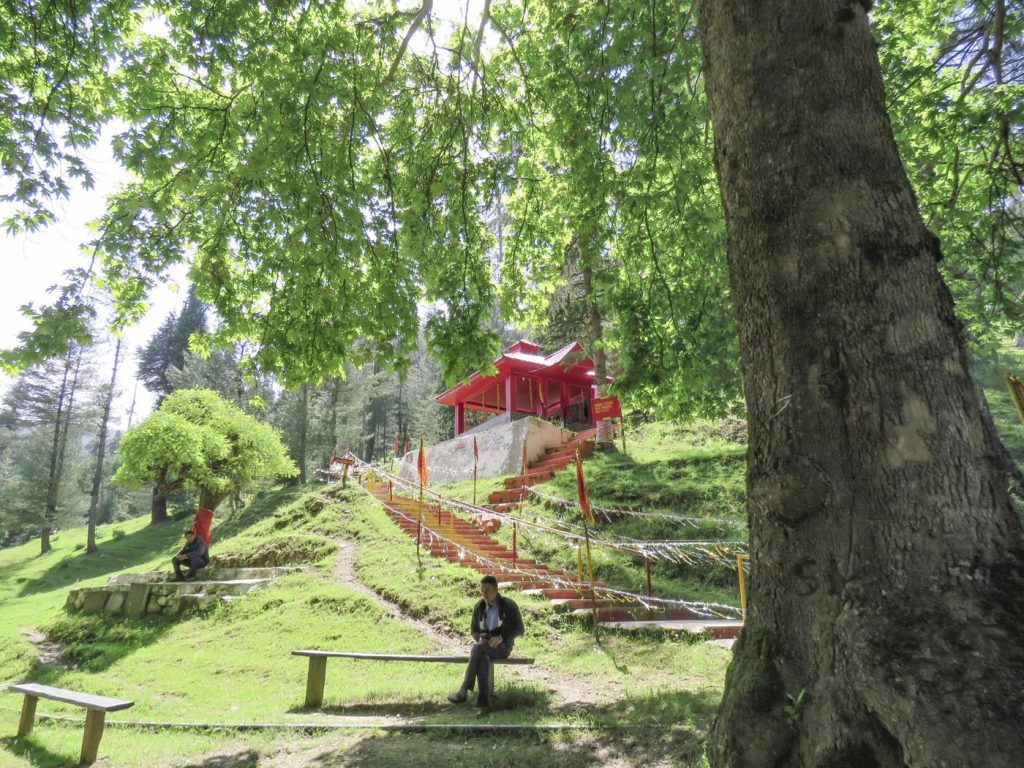

The priest told me, “The temple abounds in miracles. When the militants blew up the temple with explosives, the murti was destroyed and the legendary chinar tree caught fire, but it was not destroyed. The local Muslims have been very supportive. They have immense faith in this temple and regularly come here to pray.”
The much smaller Mattan Suriya Shrine, about 1.5 miles from the Martand Sun temple, remarkably escaped damage in the 1990s. It is an ancient shrine, said to have existed from the time of the creation of Kashmir, when the Satisar Lake, which filled the valley, was drained due to earthquake activity. The temple has individual shrines for the Sun God, Lord Rama, sage Kashyapa and, more recently, Siva. The Mattan shrine is regarded as an auspicious place for religious ceremonies, especially shraddha (obeisance to ancestors and departed souls).
Tej Kishan Tikoo, secretary of Mattan Teerth Trust, told me, “The local Muslims revere this temple. When anyone falls sick, they consume water from the spring here. If their cattle fall sick, they use this spring water to heal them. They use the earth from this temple and smear it on their foreheads for well-being, especially if they are unwell. There has been harmony between the communities here; when the exodus happened, five to six Pandit families stayed back and maintained the temple. The temple was unaffected during militancy.”
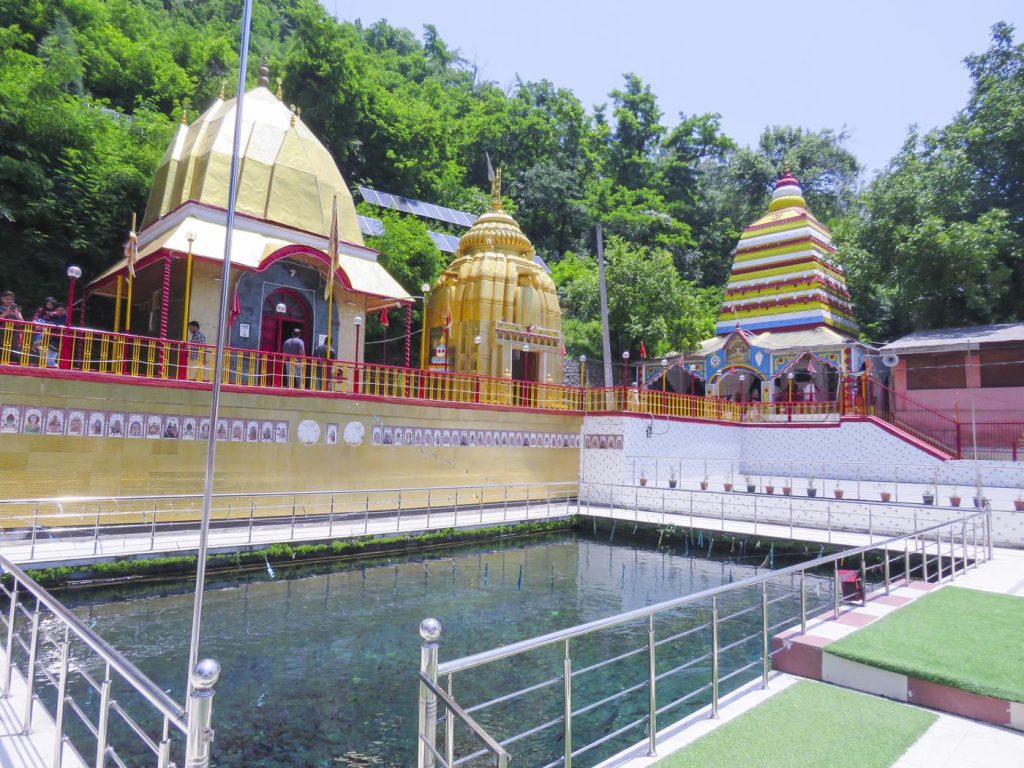

Prathibha, a devotee of Lakshman Jhoo Ashram, was my guide to Gopiteerth, reached through a narrow passage alongside a canal. Its serene surroundings of Nishat gardens infuse calmness. A huge chinar tree beckons you to meditate under it.
During the exodus, the temple was desecrated and murtis were discarded.Dr. Maharaj Kishan Razdan rebuilt the temple. He’s a 84-year-old surgeon settled in the US who has rebuilt nearly 10 temples (15 more in the pipeline) out of his personal earnings, to the tune of us$600,000 so far. He personally drives each one of the projects. As with Mattan and other temples, this also is revered by local Muslim villagers.
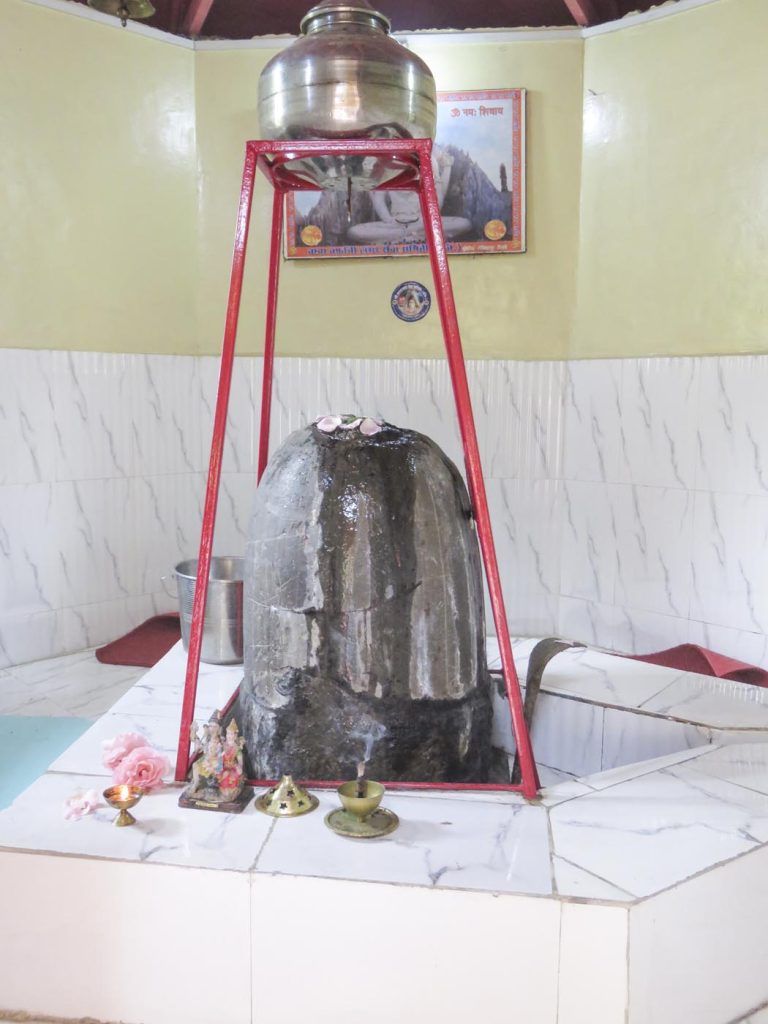

The most conspicuous monument commanding the attention of a visitor to Srinagar is the Shankaracharya Hill Temple. Overlooking the city at a elevation of 1,000 feet, it is believed to be the oldest in Kashmir. As one ascends the 240 well-spaced steps to reach the top, the panoramic beauty of Srinagar leaves you spell-bound. An additional flight of around twenty steps leads you further up to the sanctum sanctorum, which houses a majestic Sivalinga.
Originally known as Gopadri, the hill later came to be known as Shankaracharya Hill. The 10th-century saint Adi Shankaracharya, the apostle of Advaita, is said to have spent time in deep meditation at a cave below the temple, where he composed his famous hymn Soundarya Lahari. The temple is thought to have been built by King Sandiman, 2629-2564 bce, and later repaired by Gopaditya, 426-365 bce, and Lalitaditya, 699-736 ce. For some reason Sikander, who went on a rampage destroying temples in the region, did not attack this one.


The temple is flooded with tourists and devotees from all around the world. Virtually every Hindu tourist visiting Kashmir pays obeisance here. The temple, under the care of Dharmarth Trust, was unaffected by the turmoil of militancy.
Hari Parbhat is an imposing hill in Srinagar that houses numerous temples, the most important being the Sharika Devi Temple. Kashmiri Hindus regularly visit this shrine. A circumambulation of the hill is considered sacred.
I visited many other temples during my weeks in Kashmir. Among them was Manzgam Ragnya Devi in Kulgam district, which was completely razed to the ground in 1989, with rebuilding starting in 1996. Another was Kalpalmochan Teerth in Shopian town, a shrine of immense importance to the pandits as a place to perform shraddha ceremonies for the dead. It, too, was destroyed in the militancy and its lands usurped. Ramesh Kumar Pandita was instrumental in its rescue and reconstruction from 2009.
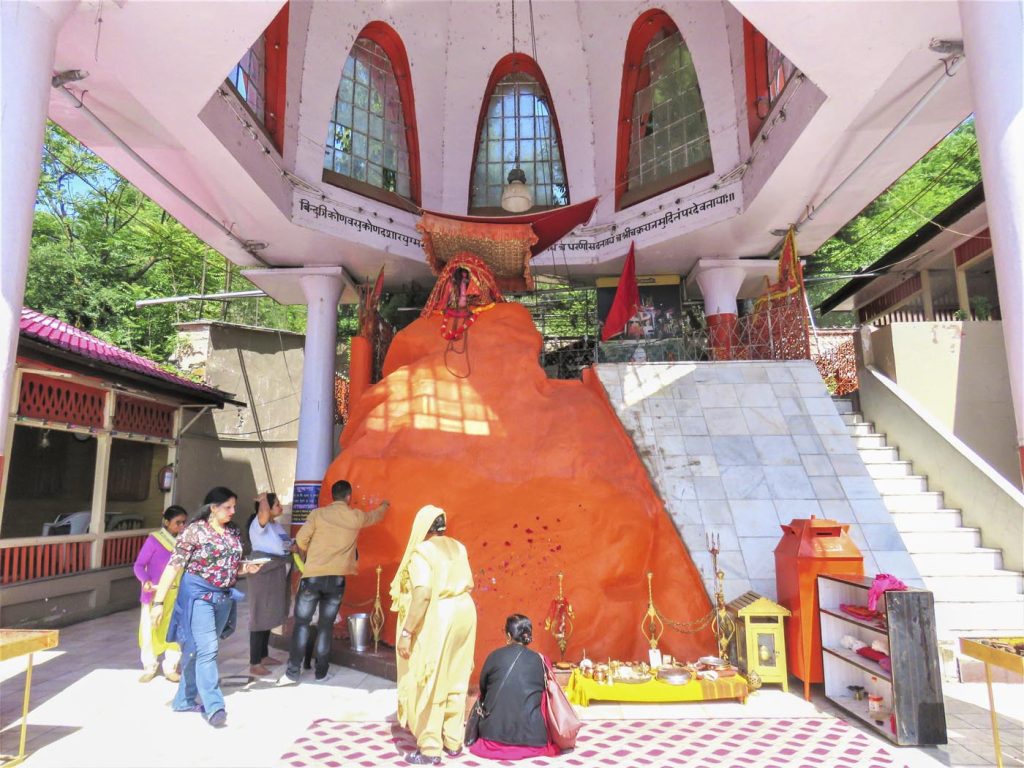

Another pandit, Maharaj Kishan Kaul, told me, “Initially the locals troubled us a lot and we fought back. Some locals threatened us. I decided that even if I was going to die I will not give up. This is the place where I grew up, and it’s our temple.”
The Chandigam Temple in Kupwara was abandoned in the 1990s and the murti was taken away by the fleeing pandits. In 2022, a delegation of Muslims along with some pandits approached the local army unit requesting them to rebuild the temple, as well as an adjacent Sufi shrine which had also been destroyed. Work was completed in a short time with the help of local Muslims, and worship resumed. There are over 6,000 ancient temples and hundreds of gurudwaras in Kashmir. Efforts are underway to restore them with the support of local Muslims. Festivals like Janmashtami, Ram Navami, Guru Purab and pujas at Devi shrines have come back to their old glory. Srinagar was all decked up even for Christmas. The harmony of coexistence is returning to the valley.


